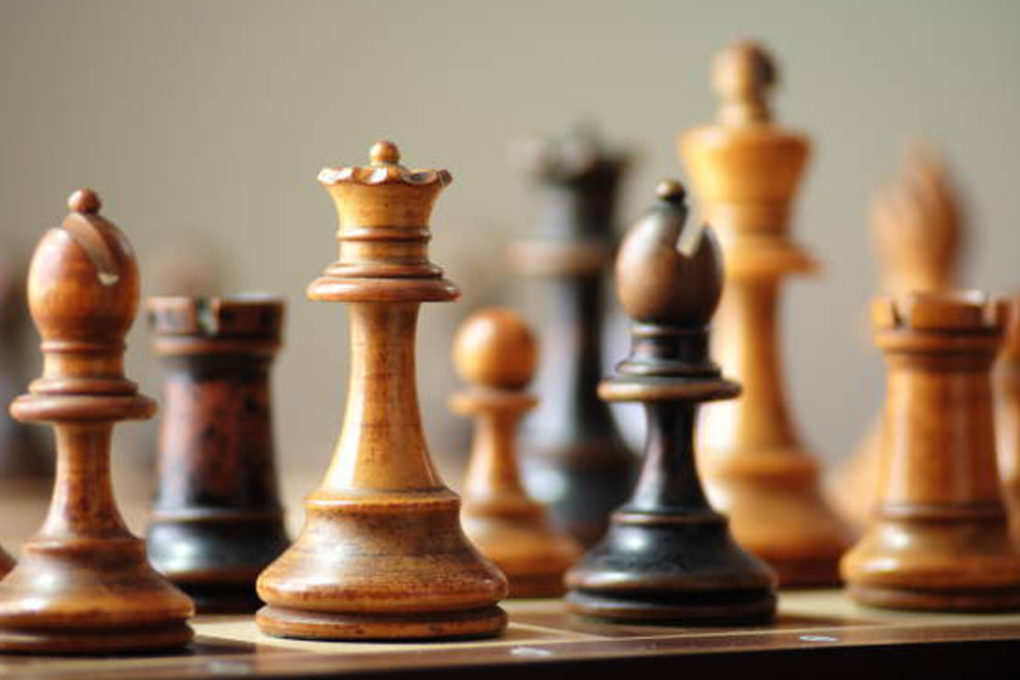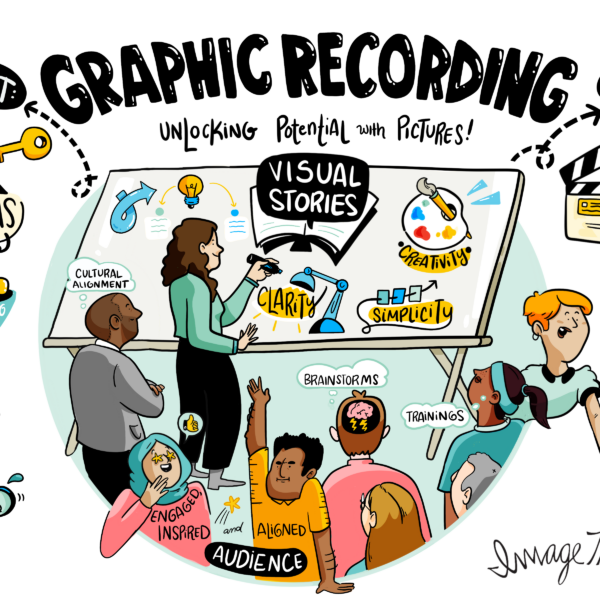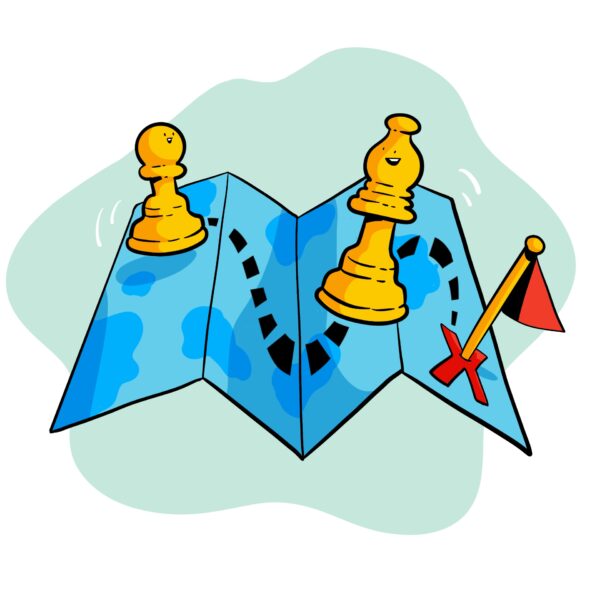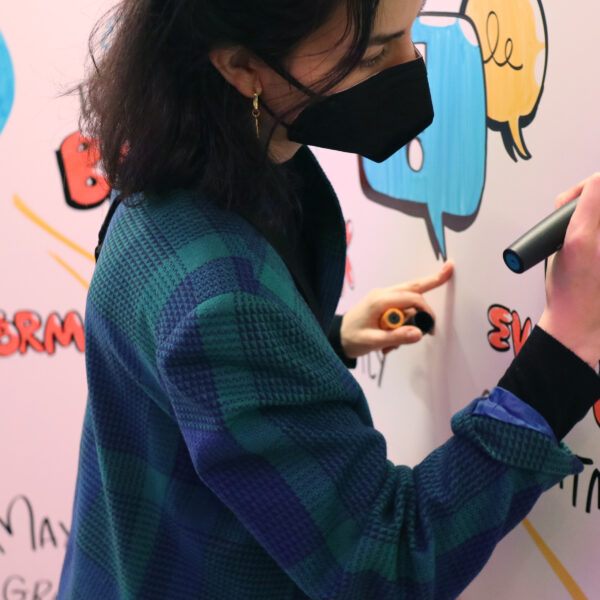Sometimes, it can be difficult for new clients to understand why graphic recording and graphic facilitation is so effective. This article is part of an ongoing series, It’s a Visual World. In it, we explore everyday experiences that showcase the myriad ways visual inputs allow our brains to work more efficiently. Look for areas in your daily life for the visual iconography you rely on, then give us a call. Seeing is believing.
The Opening Gambit
At ImageThink, it’s always strategy season, and that means we’re always looking for real world examples of visual strategy in action. Our latest example dates back to the 13th century. (Believe it or not, chess did not originate with that Netflix miniseries….)
You may know that the game of chess has its origins nearly 8,000 years ago in India, with written examples of the modern game dating back to the 18th century; but did you know that the pieces you think of and know have ONLY been around since 1849?
Design Language (iconography)
Picture a chessboard. Visualize the pieces: king, queen, bishop, knight, rook, pawn. Pretty easy, right? The iconography of chess has been standardized for over 170 years, but it wasn’t always the case. Originally, defenders of the king included the counselor, infantry, cavalry, elephants, and chariots. These pieces and their iconography varied regionally and by country.
By the turn of the 19th century, broader global travel encouraged the formation of chess clubs and competitions, which in turn, necessitated a standardized board and set. Enter Howard Staunton – a renowned English chess master, widely regarded as the best player in the world through the 1840s, Staunton organized many of the competitions around London and Europe.
While he did not design the modern pieces, he promoted the use of Nathaniel Cook’s neoclassical designs, which are still required in competition play today. There are, of course, subtle variations of the core pieces, but the Staunton set can be recognized worldwide, by amateurs and grand masters alike, across borders – because the clear visual iconography supersedes language or local interpretation.
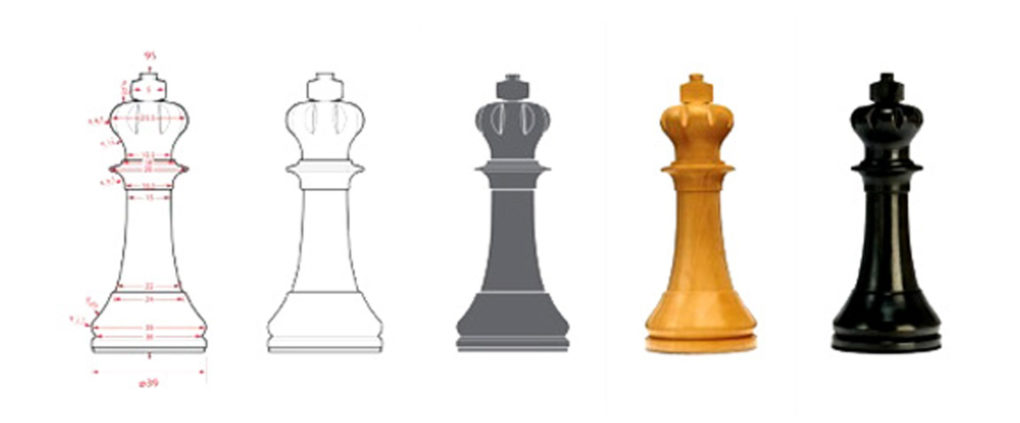
Assembling the Team (specialization and movement)
The first element that distinguishes chess from other early strategic boardgames is that each piece has a unique movement. By looking at each piece on the board, we know immediately how it can move; we can quickly assess where it can go, and what danger it may be under.
In the real world, we certainly don’t know all a person is capable of just by looking at them. Nor do we know the extent of a threat or challenge at first glance. Our options aren’t limited to strictly lateral or diagonal choices. But by using visual metaphor, mnemonics, and iconography, we can help to distill and define both the problems we’re trying to solve, and the resources at our disposal to solve them.
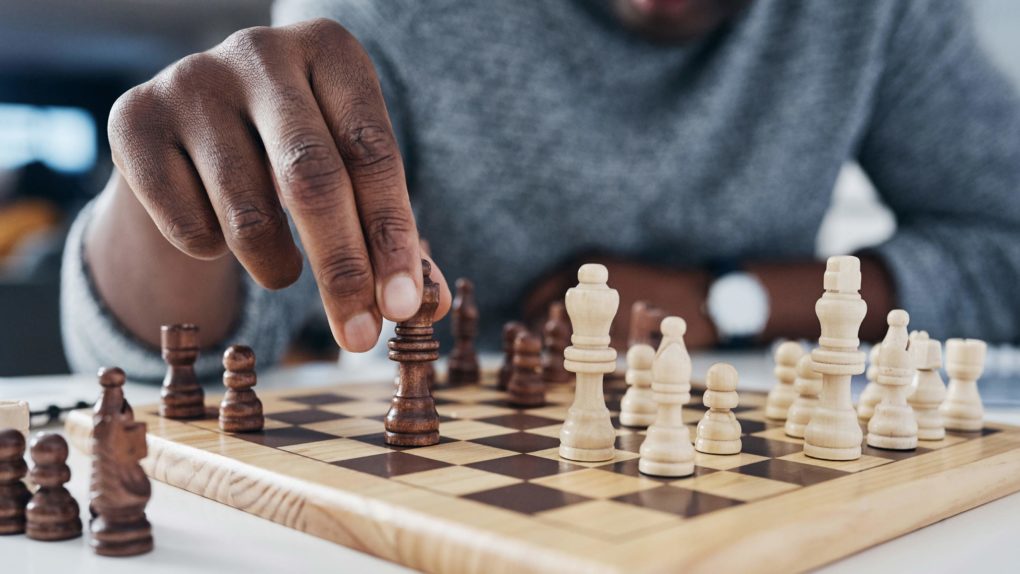
One of ImageThink’s favorite icebreaker exercises is “drawing your superpower.” We like to introduce it early in a multi-day or multi-part visual strategy session. In addition to being a light and fun way to get people talking, and to introduce the element of drawing to the situation, identifying everyone’s superpower helps leadership familiarize themselves with the chess set they have in front of them. It helps them imagine new moves to make with their players.
Seeing the Whole Board (big picture visual strategy)
The second unique element of chess is that the goal is to target the capture of one piece, your opponent’s king. Unlike checkers, where you’re clearing the board, or card games that have certain score thresholds or can play on indefinitely, chess offers a singular, clearly defined objective. The skill of the player is determined by how effectively, efficiently, and cleverly they can use the team of pieces at their disposal to achieve it.
Critical to successful chess play is the ability to see the whole board. Big picture thinking. Zooming out. You know the terms, and the idea behind it. Too often individual players, team members, or departments get focused on the minutiae of day-to-day operational challenges and lose site of the end goal. They’re defending their knight at the cost of putting the opponent’s king in check.
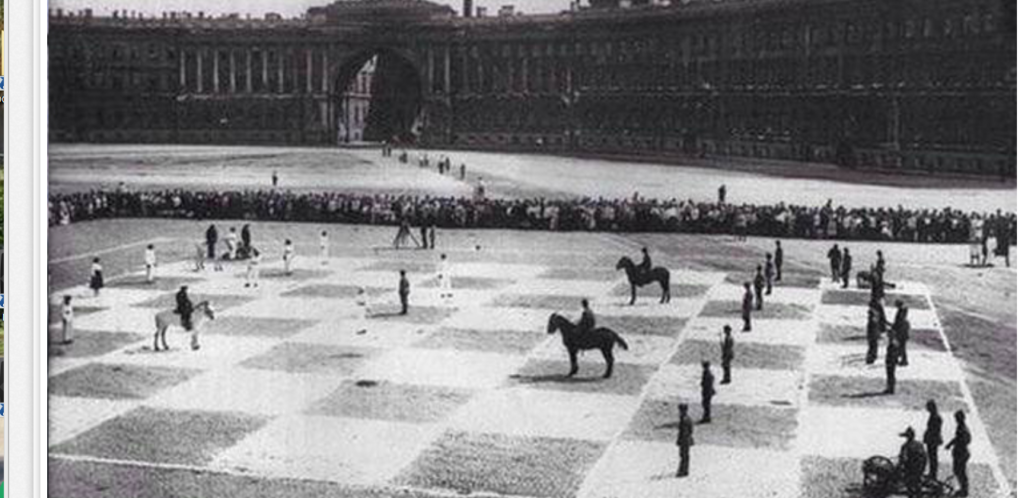
Chess is a visual game; skilled players can look over the entire board and evaluate possible movements, threats, and opportunities. Have you ever tried reading the transcript of a chess match? King’s pawn to e4. Knight to queen’s bishop 3. Riveting. And about as clear as mud to most people. So why treat your 3-year strategic plan this way? With dense text and sector specific jargon and notation?
Be the grand master of your business’s fate. Let ImageThink help you draw out your challenges and insights, see the big picture, and chart your path forward.
